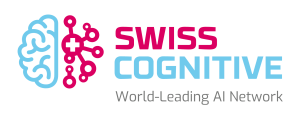Artificial intelligence (AI) is no longer the future. A wide range of industries now uses it presently. The news is regularly filled with stories of new and innovative uses for AI platforms — from diagnosing medical conditions to keeping smart cities safe. One of the industries we’re seeing a growing trend for this technology is web design.
SwissCognitive Guest Blogger: Sam Bowman – “3 Ways in Which AI Web Design Will Impact User Experience and Conversion” Image by Pexels

Let’s explore a few ways AI web design will impact user experience and conversion.
Design Automation
Professional web designers and developers will likely always be the driving force in effective website creation. However, it’s important to recognize that more AI web development tools are emerging that provide a certain amount of design automation. When experienced professionals collaborate with these platforms, they have the opportunity to create a more relevant and agile online customer experience that may translate to conversions.
Some of the most useful AI platforms are those that help developers create new pages, sites, and features faster. There are now tools — like the open-source Screenshot to Code — in which designers can provide mock-up images or screenshots to a neural network trained in web development. The software can then translate the images into code, which designers will only need to do minimal testing. This means that brands can more swiftly respond to trends or changes in preferences that impact user experience.
There are also AI-automated design tools that allow for greater personalization. Algorithms can pick up the nuances of consumer behavior as they navigate your website. The AI platforms then utilize this data alongside customer profile information to adjust visual components, landing pages, and product recommendations to best suit each user. This can help customers feel they’re gaining a more relevant and unique journey, which may feed into satisfaction and conversion likelihood.
Content Provision
Including content in web design is an important part of providing a user experience that results in conversions. These materials provide value to consumers in ways that boost their engagement with a brand. To have the most impact, it is vital to adopt methods of content creation quickly without sacrificing quality. This can involve planning ahead and utilizing templates. However, AI tools are also playing a role in ensuring web designers can incorporate content in a robust and efficient way.
Completely automated content generation is not yet accurate or nuanced enough to make for solid content. There are assistive tools that can make a difference, though. AI copy-creation platforms can provide designers with some basic content ideas and text based on topic prompts. Nevertheless, these should be subject to a certain amount of professional writing and editing, especially to ensure accuracy, credibility, and adherence to the brand voice. Some platforms — such as Ryter and Article Forge — also include features such as automatically generating royalty-free images and publishing them to the site.
It’s also important to remember that the accessibility of online content can also influence consumer engagement. There are AI-driven translation tools, such as Deepl, that web designers can use to generate text in a variety of languages to suit consumers’ needs. For video and image content on the site, automatic captioning and audio description tools can be vital in improving the user experience of people with vision impairments.
Customer Service
Customer service is deeply connected to user experience and conversions. Consumers are increasingly using websites not just to shop but also to gain advice, lodge complaints, and seek refunds from brands. Utilizing AI in web design can have a positive impact by making certain customers have easy and quick access to these components.
At the moment, AI chatbots are valuable tools to integrate into websites. Bots function as automated front-line support systems and can be coded to interact using a personality reflective of the brand voice. They can answer specific types of customer questions and provide frequently-sought advice in ways that free up already busy customer service teams.
This saves time for customers, which is key to a positive user experience. However, it can also play an important part in prompting users along the customer journey by funneling them through to sales teams based on their queries. This may result in more conversions. Not to mention that data gained from interactions can trigger marketing communications with relevant product offerings, discount codes, and content.
Conclusion
Moving forward, it is also worth considering the innovative potential for AI. Developments are already demonstrating that machine learning is capable of increasingly creative and practical tasks. Consider taking the time to explore thus-far untapped uses in customer experience. After all, it’s only through experimentation that breakthroughs occur. You may find your company at the cutting-edge of consumer interactions.
About the Author:
 Sam Bowman is a published freelance writer from the West Coast who specializes in healthcare tech and artificial intelligence content. His experience in patient care directly translates into his work and his passion for industry technologies influences the content he creates. Sam has worked for years – directly in, and writing about – healthcare technology and the many benefits it offers to patients and doctors alike. He loves to watch as medical tech and business software grow and develop, ushering in a modern age of industry.
Sam Bowman is a published freelance writer from the West Coast who specializes in healthcare tech and artificial intelligence content. His experience in patient care directly translates into his work and his passion for industry technologies influences the content he creates. Sam has worked for years – directly in, and writing about – healthcare technology and the many benefits it offers to patients and doctors alike. He loves to watch as medical tech and business software grow and develop, ushering in a modern age of industry.
Der Beitrag 3 Ways in Which AI Web Design Will Impact User Experience and Conversion erschien zuerst auf SwissCognitive, World-Leading AI Network.



